Choosing Your Social Channels: A New Approach for Brands in 2017
How did you choose the social media channels you’re currently using?
Are you happy with the impact they’re having on your brand?
Many marketers select social media channels based on what’s popular at the time. While that makes a lot of sense (popular=large audience numbers), there’s a good chance what’s “popular” isn’t necessarily “best” for your brand.
Take Facebook.
It’s pretty widely accepted that every brand should be on Facebook, and while I get that it makes sense to at least have a presence on there (i.e. a page with company information, other essential details, and the occasional update), spending too much time on the platform might not be worth your while – especially if you’re targeting the under-25s.
Reports show that younger demographics are shunning the platform in favor of alternatives that their parents aren’t using (yet…), while engagement as a whole is reportedly declining.
Add to this the fact that the organic reach of posts has long been in decline and that competition from big brands with bigger budgets than you is crazy high, and you wouldn’t be blamed for trying something new; which, coincidentally, is what we’re going to talk about here.
Below are six relatively new and growing platforms, alongside a couple of new features that add a new dimension to existing platforms. I’m going to talk you through how each platform works, who’s using it, and how you can leverage it. After this, you should be able to make an educated decision as to how you’re going to change your approach to social media in 2017.
1. Snapchat

How it works
Instead of straight-up messages, Snapchat users communicate via photos and videos (although you can scribble a message over both forms of media, if you choose to). Initially, Snapchat’s USP was the short lifetime of content sent over the app. Photos would disappear 10 seconds after being opened, and videos would disappear as soon as the first viewing wrapped up.
While these features still apply, Snapchat has since expanded to include other features like Snapchat Stories – a series of photos or videos the user has captured in the last 24 hours, and decided to share publicly (or with anyone who’s following them, at least).
Who’s using it
Despite widespread belief that Snapchat is exclusively an app for teens, user stats show that’s not quite the case.

While Snapchat’s clearly more popular with younger demographics (37% of users, the largest majority, are aged 18 to 24), just over a quarter of users in the U.S. (26%) are 25 to 34. A not-insignificant 12% are 35 to 54, and 2% are over 55.
How you can leverage it
One of the best ways for brands to leverage Snapchat is to share exclusive behind-the-scenes footage from your company, “exclusive” being the operative word. If anything you post to Snapchat remains only on Snapchat, it’s an incentive for people to follow you on the platform, and tune into what you post.
This means the platform is great for building a community – especially if you take the time to have one-on-one conversations with some of your followers. The nature of Snapchat means that messages feel extra-personal – you’re not just sending text, you’re sending a photo or video – and that makes a big difference.
Snapchat’s also pretty awesome for promoting time-limited offers and promotions. Just add details of the offer via a pic to your Snapchat story, and make it clear it’s only available for 24 hours, at which point the story – and with it, the offer – will expire.
You can also – if you have the budget – take advantage of sponsored lenses, geofilters, and ads.
2. Instagram Stories
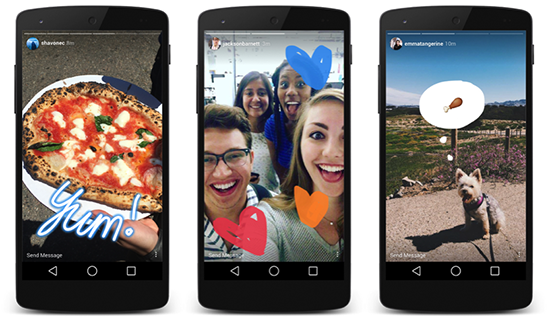
How it works
Instagram Stories are very similar, if not nearly identical, to Snapchat Stories (this led to some backlash when Instagram Stories originally launched, but the world quickly got over it).
The story function on both platforms enables you to post images and videos to your “story,” which is then viewable to your followers for 24 hours. If you want your content to be visible permanently (or until you delete it yourself) you’ll need to post it to your feed as normal (something you can’t do with Snapchat).
Another key difference between the two “stories” are the available filters. Instagram’s “story” filters help enhance the appearance of the content, much like they’ve always done. Snapchat’s filters are largely designed to add a “fun” element to your content.
Last but not least, Snapchat videos top out after 10 seconds, but Instagram videos can last up to 60 seconds.
Who’s using it
In June of last year, Instagram announced it had reached 500 million total users, and more than 300 million daily users. Two months after launch, 100 million of them were also using Instagram Stories on a daily basis.
Unfortunately I can’t find any demographic information on who’s using Stories specifically; however, if we assume it’s an even subset of Instagram’s user base, that’s 31% of U.S. women and 24% of U.S. men. Instagram’s biggest user group by age (in the U.S.) are 25-34 year olds (25.6% of users). This is followed by the 18-24s (22.9%), 25-44s (19.4%), 45-54s (15.5%), 55-64s (11.1%) and the over 65s (5.5%). (source)
How you can leverage it
Since stories last just 24 hours, they’re great for pushing out limited-time offers and sales, and they’re perfect for sharing teasers for upcoming content or new products. You can film behind-the-scenes footage – in general or at events – and add urgency by stressing how followers only have 24 hours to view what happened.
The opportunities are very similar to those offered by Snapchat, with the benefit of longer videos and (to an extent) a more mature audience.
3. Facebook Live
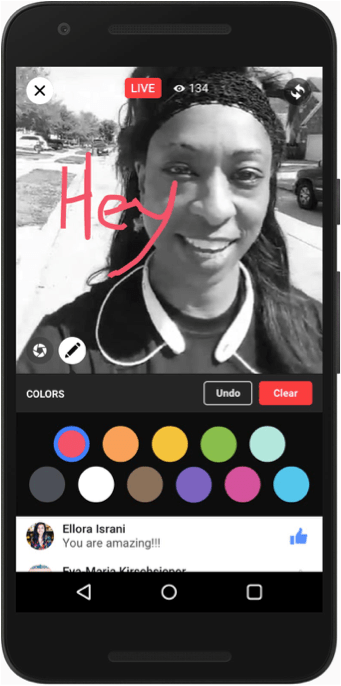
How it works
Following hot on the footsteps of live streaming app Periscope and the now-defunct Meerkat, is Facebook Live – a feature of the regular Facebook app that lets users press record and start broadcasting to their following instantly.
Of course, Facebook offers access to a far, far bigger audience than any of its competition can muster up.
Live videos can last a maximum of 4 hours, be enhanced with filters, and – this is possibly the best bit – are currently given some level of priority in news feeds (exactly how much, I don’t know, but it’s safe to say Facebook’s desire to push the “live” feature means getting your broadcasts in front of your friends and followers will be easy – at least for now).
It’s also worth noting that users reportedly post 10x as many comments to Live videos as regular videos.
Any content you film using Facebook Live can continue to benefit you after you hit stop, too. When your broadcast finishes, the video will automatically be posted to your page (at which point you can delete it, if you choose).
Who’s using it
Anyone who’s using Facebook and likes your page, is your friend, or follows you, could potentially view your broadcasts. Whether or not they see your broadcasts is dependent largely on timing and how important Facebook’s algorithms deem your broadcasts to be.
This means Facebook Live’s audience is interchangeable with Facebook’s audience – that’s about 1.18 billion daily users, including 67% of men in the U.S. and 69% of women. 88% of U.S. residents aged 18-29 use the platform, as well as 79% of 30-49 year olds, 61% of 50-64 year olds, and 36% of those 65 and over.
How you can leverage it
The “live” part’s the key – you use it to provide live insights into your life or – in a brand’s case – the business.
This could be (but isn’t limited to):
- An event you’re hosting or attending.
- How your product is produced.
- A company meeting (nothing classified, obviously – but this could be a great chance to showcase your creative process).
Remember that the more viewers your broadcasts get, the more they should benefit you. That means it pays to think ahead and start drumming up interest in your broadcasts before they take place.
While it goes without saying that you should post advance notice of broadcasts to Facebook, pretty much any channel you use to promote your brand can be leveraged for this purpose, too.
4. Medium
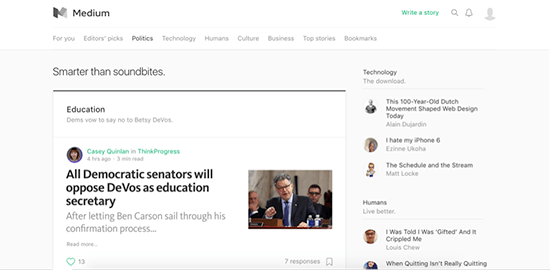
How it works
Medium is a social blogging platform, or in Medium’s own words, “a different kind of place to read and write on the internet.”
Essentially this means that Medium is a cross between an open blog (as in anyone can create an account and submit something) and a social network. Its popularity is in part due to its community – users are encouraged to interact with the content they read whenever possible.
Perhaps more important is the platform’s commitment to offering a level playing field for all writers – if you’re creating awesome content, Medium gives you the chance to shine, regardless of the current size of your following.
Who’s using it
Medium’s readers are primarily young and educated. 95% of them are college graduates and 43% of them are earning six figures or more. Half of them fall into the 18-34 age bracket and 70% of them are under the age of 50. (source)
How you can leverage it
To start leveraging Medium, you need to get creative. You need to be creating great content and submitting it to the platform, or repurposing content you’ve published to other platforms by reposting it to Medium.
Remember that the quality of your content makes all the difference – and not just the quality of your writing, either. While well-written content is no doubt important, new concepts and fresh viewpoints tend to matter more. Medium’s moderators aren’t looking to push the same information and ideas they’ve seen countless times before, no matter how well-presented they might bec.
You can also create your own “publication” on Medium. This is a collection of posts that you have full control over. You can publish your own content, and if you choose, invite others to publish content, as well.
Bear in mind that you’re expected to give the publication a theme, and stick to it.
You can also request to become an editor or writer for an existing publication. Choose wisely – this is a great way to get in front of an established audience.
5. Periscope
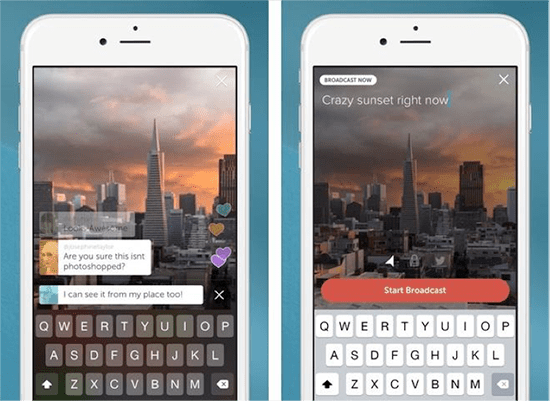
How it works
Periscope is very similar to Facebook Live (and despite the fact that it’s arguably the lesser known of the two, was around first). It’s a live streaming app that encourages people to “react” and comment on a broadcast as and when it happens.
It was also, before it even launched, acquired by Twitter.
That means that with the click of a button, you can post any live broadcast to Twitter. This adds a whole new dimension to how you can engage your Twitter following.
Who’s using it
The vast majority of users are relatively young – 41% of them are 16-24, and 3 out of 4 are under 35. 16% are 35-44, 6% are 45-54, and 3% are 55-64.
The gender divide leans quite heavily towards men – 65% of users are male and 35% are female. (source)
How you can leverage it
It makes sense to use Periscope in much the same way you’d use Facebook Live – to provide your fans with behind-the-scenes footage into events at your brand or its day-to-day activities – something many big brands are doing already.
These are things I’ve recommended doing with platforms like Instagram and Snapchat, too, but bear in mind the key difference between those and “live” video platforms like Periscope: time limit.
Instagram and Snapchat are ideal for offering your audience behind-the-brand “snapshots,” while live video platforms share much more in common with live TV. Facebook Live has a 4 hour limit and Periscope, no limit at all. This means you can livestream entire events, if you want to.
The relationship between Periscope and Twitter means great things for marketers, too.
Every time you post a Periscope broadcast to Twitter, you’re tapping into your Twitter audience as well as anyone who’s following you on Periscope.
You can then increase your reach further by adding appropriate hashtags to posts and if you’ve got the budget for it, leveraging Twitter Ads.
6. Yik Yak
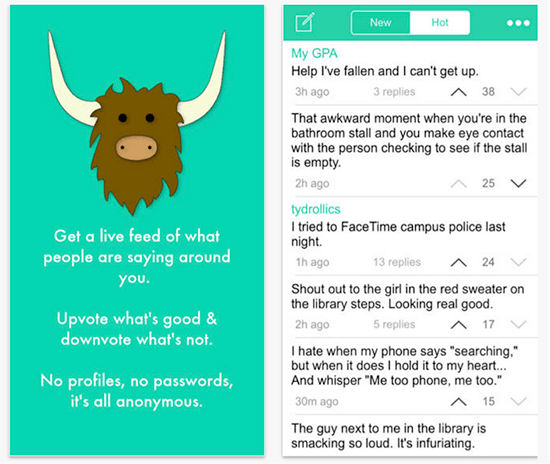
How it works
Yik Yak is an “anonymous” geolocation-based social media app that allows people to communicate with other users who are currently nearby – within a 5 mile radius, to be precise.
It’s entirely text-based, and in a Twitter-like fashion, all messages are limited to 200 characters.
In terms of how it’s used, the general idea is very simple – users share whatever they’re thinking at the time. It’s very much an unfiltered platform – expect to see profanity and a lot of oversharing. If you’re not easily offended, you’ll probably find this is part of its charm.
Who’s using it
While there doesn’t appear to be any specific demographic data reported for Yik Yak (if you know of any, link me up in the comments and I’ll try and update), it’s widely accepted that its primary user base is U.S. college students.
How you can leverage it
The location-based element of the app means it’s best-suited to local businesses – especially those with establishments that are frequented by Yik Yak’s core user base.
You can:
- Draw in potential customers who are currently nearby by offering exclusive offers only Yik Yak users can benefit from.
- Ask for feedback about your product or service. The anonymous nature of the app means customers are more likely to be honest.
- Monitor what’s being said and jump on opportunities – someone’s nearby and hungry? Tempt them into your restaurant with a bespoke offer.
- Sneakily promote your product or service – since it’s anonymous, no one will know that you’re the brand, not the consumer (tread carefully with this last one, however – go overboard and users might start to get suspicious).
How to Choose Your Social Channels
So that’s six still-growing social channels and tools that you might want to start leveraging in 2017 – but how do you decide which ones are going to work best for you?
When deciding which social channels to invest my time and budget into, I follow a simple two-step process.
- Profile your typical customer
Take the steps to understand your typical customer and in turn create a persona (or personas) that you can match to suitable social channels.
To do this, look at your demographic data in your website’s analytics. Google Analytics and other similar services will tell you (at a minimum) the age, gender, and location of your customers. That’s a pretty important starting point.
Next, start talking to your customers. Implement short surveys that request other information you can use to decide on appropriate social channels – education level and income are two that come to mind.
- Find out which channels your audience actually uses
Surveys come in super handy here too. All you need to do is ask your audience which social media channels they currently use.
If you can, try to find out how they use them, as well – are they more likely to interact with brands on a particular channel, for example?
These two steps combined should let you figure out where your current customers hang out online (so you can start engaging them on their own turf) and where your best shot at finding new potential customers lies.
Do you plan to use any new social channels in 2017? Are there any you really rate that we’ve not covered here? Let us know what you’re up to in the comments below.
Image: Pixabay





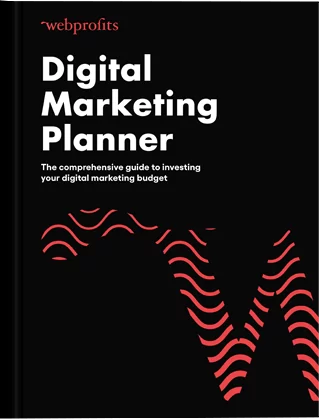
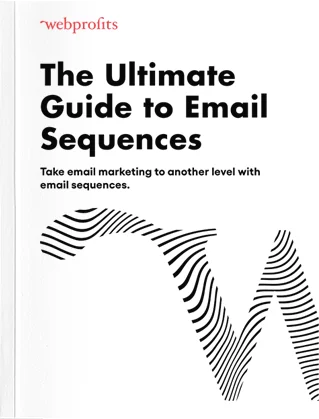
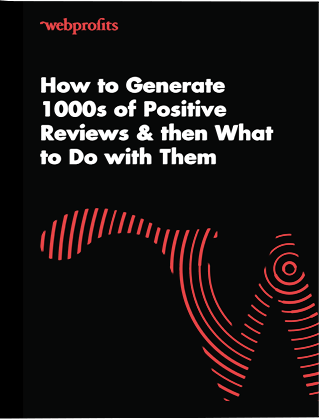
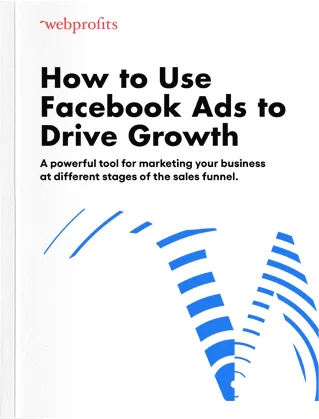

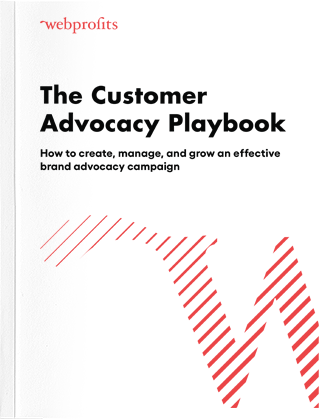


[…] Choosing the “right” one should be about more than just what’s popular. Again, consider your target. […]